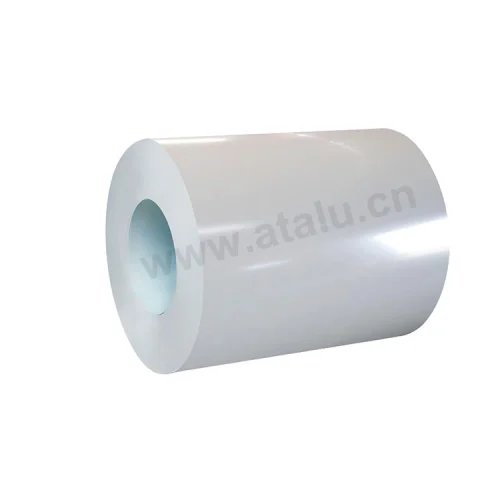Processing Technology Of Aluminum Coil
Silicon has a corrosive effect on cemented carbide. Although aluminum alloys with more than 12% Si are generally called high-silicon aluminum alloys, diamond tools are recommended, but this is not absolute, and the destructive power of the tools will gradually increase as the silicon content increases. Therefore, some manufacturers recommend the use of diamond tools when the silicon content exceeds 8%.
Aluminum alloys with a silicon content between 8% and 12% are a transition range, and both ordinary cemented carbide and diamond tools can be used. However, the use of cemented carbide should use a PVD (physical coating) method, a tool with no aluminum element and a small film thickness. Because of the PVD method and the small film thickness, it is possible for the tool to maintain a sharper cutting edge (otherwise, in order to avoid the abnormal growth of the film at the cutting edge, the cutting edge needs to be passivated enough, and the cutting aluminum alloy will not be sharp enough) , and the film material containing aluminum may cause the blade film to have an affinity with the workpiece material and destroy the combination of the film and the tool base. Because the superhard coating is mostly a compound of aluminum, nitrogen and titanium, it may cause chipping due to a small amount of peeling off of the cemented carbide substrate with the film.
It is recommended to use one of the following three types of knives:
1. Uncoated ultra-fine grained carbide cutting tools
2. Carbide tools with no aluminum coating (PVD) method, such as TiN, TiC, etc.
3. Use a diamond cutter
The chip space of the tool should be large. It is generally recommended to use 2 teeth, and the rake angle and clearance angle should be large (such as 12°-14°, including the end tooth clearance angle).
If it is just a general milling surface, you can use an indexable face milling cutter with a 45° entering angle and a blade specially designed for processing aluminum alloys, which should work better.
In 1808, alumina was used in the laboratory to become aluminum by electrolysis, and it was used as a building material on the spire of the Washington Monument in the United States in 1884. Aluminum alloy materials synthesized by adding various metal elements have been widely used in the construction industry. in each link. The thickness of aluminum alloy commonly used sheet: the advanced metal roofing (and curtain wall) system is generally 0.8-1.2mm (and the traditional one is generally ≥2.5mm).






